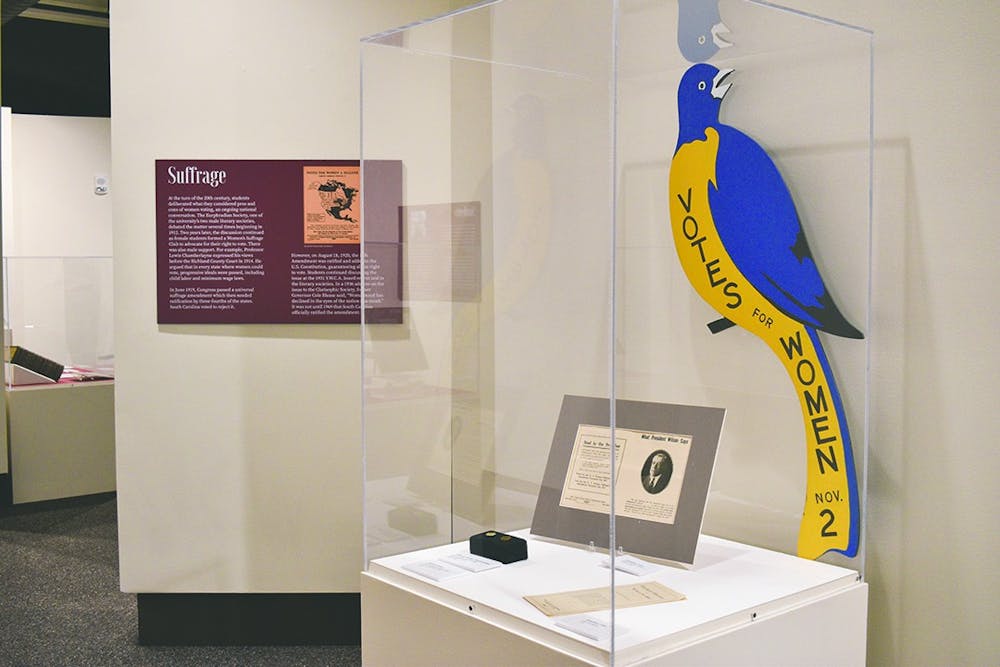The McKissick Museum is celebrating the 100th anniversary of the 19th amendment this year with "A Woman's Right" exhibit which examines the past to show how women at USC fought for control over their bodies and lives.
The exhibit starts by telling the story of the undocumented enslaved women owned by the founders, faculty and staff members in 1801 and includes journal entries on their lives by Professor Francis Lieber.
“We only know 18 of those women by name," Lana Burgess, a curator at McKissick Museum and project manager for the exhibition, said.
These women worked on the Horseshoe and cooked, cleaned and did laundry for students, faculty and administration. Only a little more than 200 years ago were women on this very campus enslaved.
Leila Rice, a fourth-year anthropology and history student, visited the exhibit and said women’s history is not always as preserved as men's history.
"Especially for enslaved women, there's not a lot of written history for them, so it's kind of hard to tell their story," Rice said.
The exhibit showcases important female USC figures, such as Frances Guignard Gibbes, the first female student enrolled in 1895 who became an internationally recognized playwright and poet, and Claudia Sullivan, the first female student to graduate in 1918.
Female students were not offered on-campus housing until World War I, when male students were drafted and campus housing became widely vacant. In 1924, Wade Hampton College became the first USC dormitory for women.
Today, Wade Hampton, Sims and McClintock make up the Woman's Quad, USC's female-only dorm.
Old issues of The Daily Gamecock detail women’s involvement in the wars while on campus and said they “blossomed forth, not merely as decorative ornaments of beauty, but as able executives and hard workers.”
Although women eventually gained the right to attend, live and vote on campus, male students still controlled most campus organizations.
Female students fought for privileges male students had, and eventually the first co-ed club was formed in 1899. The club included 18 women and had the motto, "The woman is the better man." The first co-ed clubs paved the way for female-led campus organizations such as the "Woman's Writing Workshop" and "Girls Without Borders."
Girls Without Borders, for example, is open to anyone and focuses on promoting gender equality. According to Mandy Harper, the organization president, this program also breaks down barriers to female education around the world.
"We need both male and female voices on campus to create that bigger conversation and to allow our university to grow and progress in the best way possible,” Harper, a first-year international business and operations and supply chain student, said in an email interview.
Burgess attributes the start of conversations about empowerment and education to past and present female-led organizations.
“We have the freedoms we have now because of those who came before us,” Burgess said.
“A Woman’s Right” will be on display at the McKissick Museum until Dec. 5 and is free to the public.

